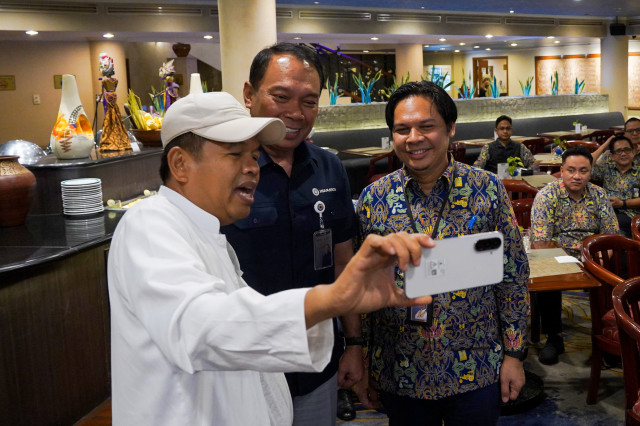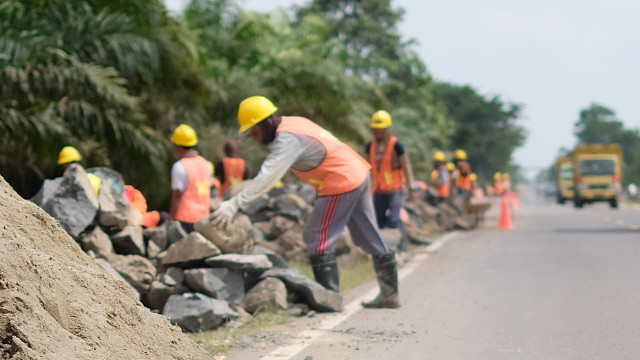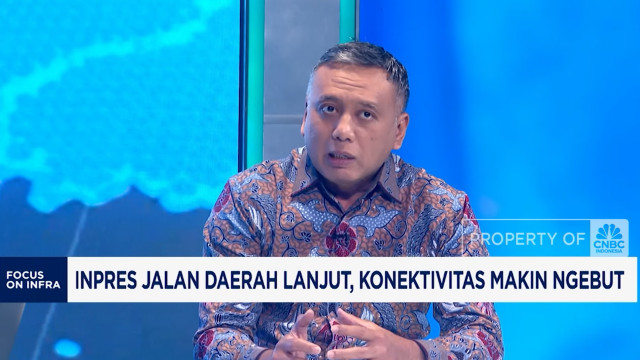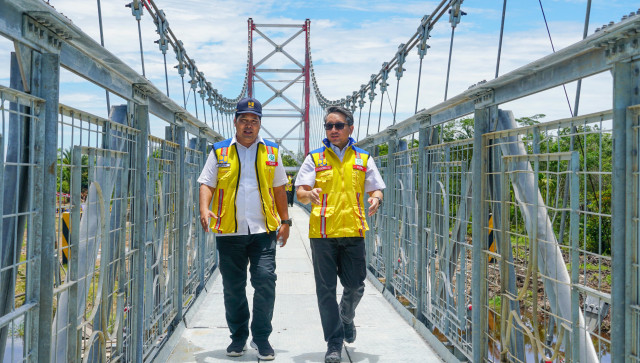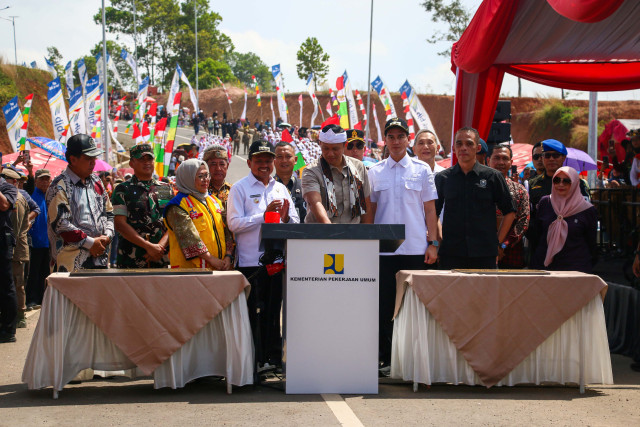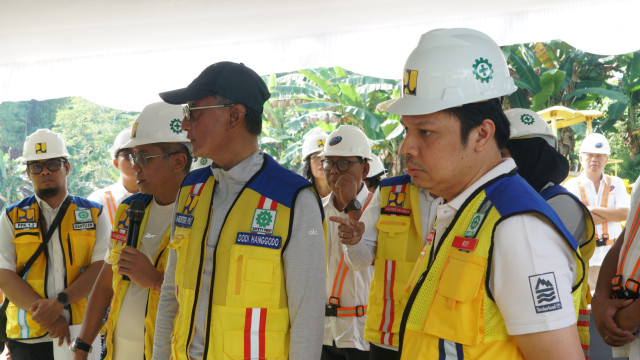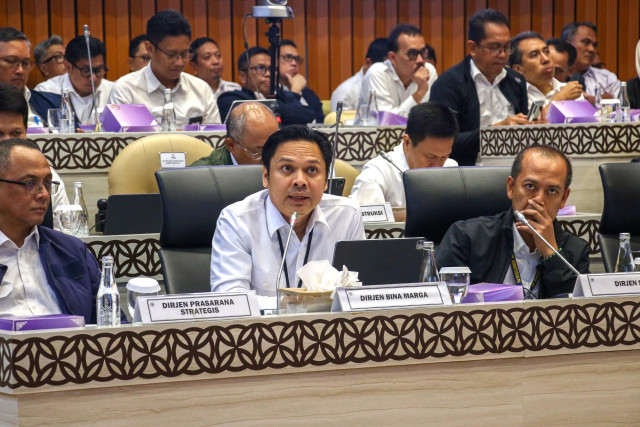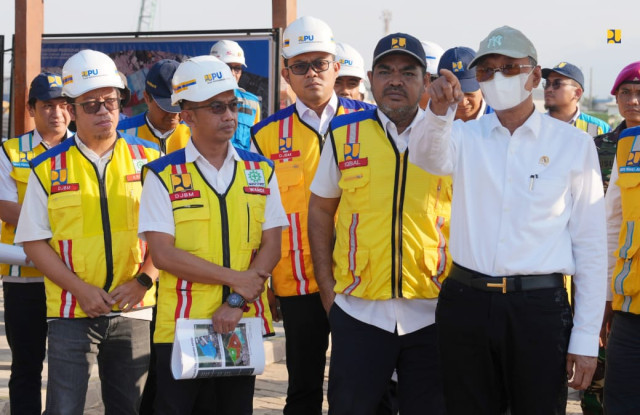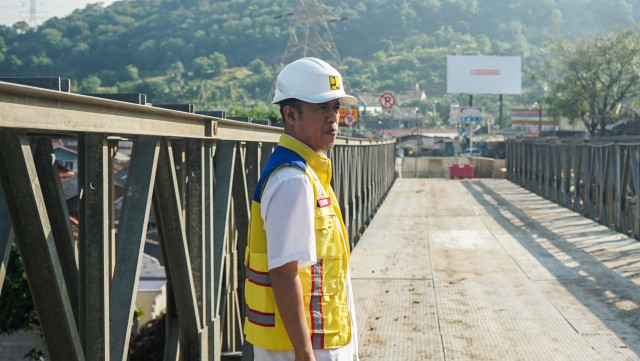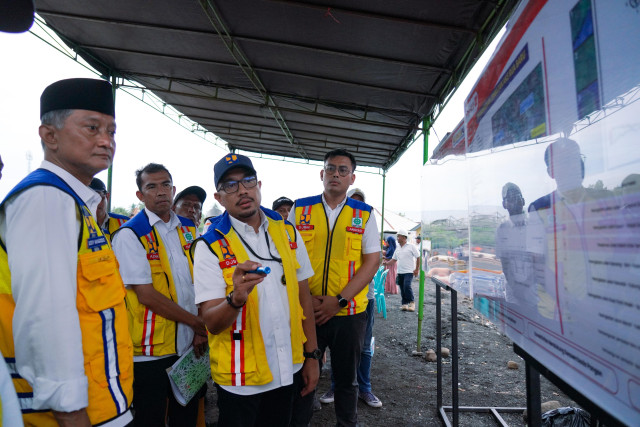Trans Papua Barat Connected, Vehicles For The First Time Can Pass
- 27 Feb 2018
- News/General
- 799 viewed
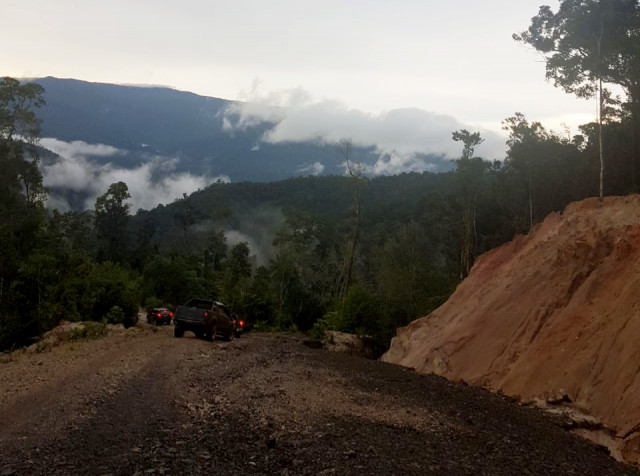
The Trans Papua Road in West Papua along 1,070.62 Km has been fully connected since the end of 2107. The Trans Papua West Papua section is divided into two segments, namely segment I Sorong-Maybrat-Manokwari (594.81 Km) and segment II Manokwari-Mameh- Wasior-Border Province of Papua (475.81 Km). Head of the XVII National Road Implementation Agency (BPJN) Manokwari Yohanis Tulak Todingrara said the two Trans Papua segments could be passed in about 36 hours.
Last week, the Directorate General (DG) team of Bina Marga led by Director of Road Development Achmad Gani Ghazali Akman along with Head of BPJN XVII and Head of Road and Bridge Center (Pusjatan) Deded Permadi Sjamsudin traveled across segment II starting from Nabire, Papua and ending with in the city of Manokwari. The trip was the first time the segment segment of Trans West Papua could be passed by a vehicle, even with a double axle vehicle.
Tulak said, the 471.81 Km road can now be crossed within 22 hours. With all of the West Papua Trans Papua roads connected, this was in response to the request of the President of the Republic of Indonesia Joko Widodo and the Minister of Public Works and Public Housing (PUPR) during a visit to Wasior, Teluk Wondama Regency in April 2016.
"At that time, the President conveyed to the Wasior community that the Ministry of PUPR is targeting the Manokmari-Wasior road segment to be connected in 2017, and thankfully since the end of 2017 the Trans road segment has been connected and we are crossing now," said the Head of BPJN XVII.
Gani said she was happy with the opening of the Trans Papua West route. But he acknowledged there were still a number of points whose level of slope still had to be addressed. According to him the geometric aspects of roads, landslide areas and grades that are still too large need immediate attention.
"Maintenance is also still lacking, especially on roads that have been opened in 2011 and 2012 so that trees and plants are re-covered, but indeed in previous years, roads that have been opened have not been allocated maintenance funds, but starting this year 2018, all This open road has maintenance funds, "said Gani.
Responding to the request of the Director of Road Development, the Head of the National Road Implementation Unit IV IVP BBNJN Benny Pesurnay said, this year he would do part of the grade handling namely at Mameh-Windesi-Boundary of Papua Province along 6 Km and also at Ambuni-Simpang Goro for 10 Km

On the same occasion, Tulak explained that from the length of Trans West Papua 1,070.62 Km, the proportion of 59 percent was asphalt and 41 percent was still not asphalt. He plans in the next two years the number of roads that have been paved can increase by 10 percent. This year, the Directorate General of Highways (Bina Marga) has allocated Rp950 billion to handle Trans Papua West Papua.
Tulak explained that his office in 2018 would also build a number of bridges on the Trans Papua Barat, which indeed crossed many rivers. Until the end of 2017, the number of bridges that need to be built or handled is 125 bridges or equivalent to 3,350 meters. BPJN XVII's strategy in the construction of the bridge is to semi-permanently use a bailey or wooden bridge.
"(All) we will complete in 2019, this year we have handled the construction of 60 bridges. For the construction technique, we invite Puskesmas to provide input, "Tulak said.
The Director of Road Development added, in the construction of Trans roads in both Papua and West Papua his side did face challenges in natural conditions in the form of mountainous contours and others. To overcome the conditions in the field, DGH works closely with Pusjatan. Tulak said, the handling of Trans is done with a 3 shift work system. For the use of building materials, he strives to prioritize the use of local materials. (Kompu BM)

